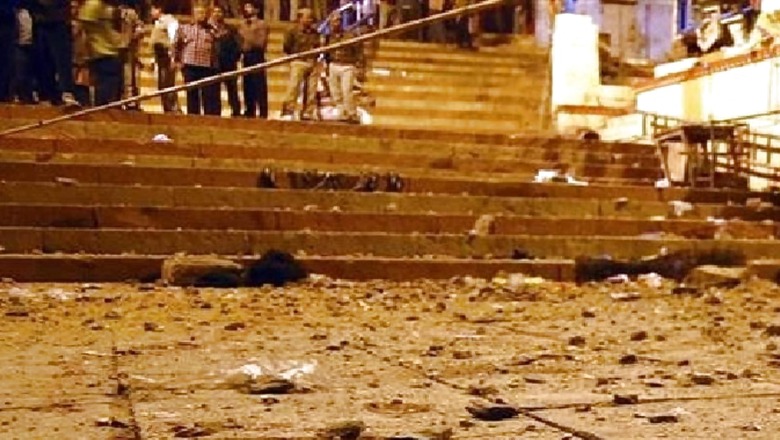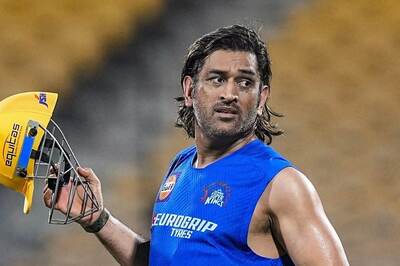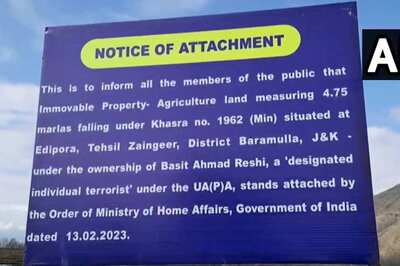
views
Three pressure-cooker bombs, one of which was detected in time by an alert hawker, three bombers from Bangladesh, a mastermind from Baghpat, and a key facilitator from Allahabad in Uttar Pradesh — all these came together to make March 7, 2006, a dark day in the history of Varanasi with 28 people left dead and over 100 injured in a dastardly terror attack.
As a Ghaziabad court on Monday sentenced to death the sole accused who went for trial, Waliullah, justice seems to have been finally served in the terror case dating back 16 years. It was a horrific sight of destruction that this correspondent had witnessed the next morning on reaching Varanasi. The holy day of Tuesday for Lord Hanuman devotees was chosen by the terrorists for a blast in the ancient Sankatmochan Temple in the city, with the bomb going off in the waiting area for worshippers next to the temple, in a bid to cause the maximum possible damage.
Similar was the sight at the busy Varanasi cantonment railway station where a bomb went off on the platform. A third bomb left in the choc-a-block street leading to the Godowlia in Varanasi was detected by a hawker named Satya Narayan Prakash in time who rushed to alert the police which defused the and the bomb was defused in time. Or the casualties would have been even higher, the police had feared. The Godowlia area leads to the Kashi Vishwanath Temple and Dashashwamedh Ghat.
The planning – Baghpat and Deoband connection
The small village of Tanda in Baghpat, UP, was where the conspiracy was hatched. This is from where Mohammad Zubair, the main mastermind, hailed from and taught at a local madrassa. About 15 years ago before 2006, Zubair and Waliullah, a cleric from Phoolpur in Allahabad, had been classmates at Deoband and knew each other well. When this correspondent visited Tanda on the day Zubair was gunned down in J&K a couple of months after the Varanasi blasts, a sense of shock had enveloped the village which wondered how a teacher and father of six could have become a terror mastermind. The police probe showed both Zubair and Waliullah had got associated with the Harkat-ul-Jihad-al-Islami (HuJI) and hatched the plan to bomb Varanasi for which three bombers came from Bangladesh to execute the plot. Waliullah helped the three Bangladeshi bombers buy the pressure cookers and in the reconnaissance of the three Varanasi target sites.
The three bombers, Mustakeem, Basheer, and Zakariya, had arrived in Phoolpur in early March with Zubair introducing them to Waliullah. These three men are also said to have studied with Waliullah in Deoband in the past. Nearly a month after the blasts, it was Waliullah’s arrest on April 5 by the Uttar Pradesh police in Lucknow that exposed the plot. Zubair had by then vanished from his village in Baghpat while the three bombers are said to have already escaped back to Bangladesh to never be caught to date. Zubair tried to take that escape route but failed and went to J&K where he was gunned down in a joint Army-Police operation on May 10.
The blast day, and a lucky escape at Godowlia
The bombs went off in quick succession in Varanasi on the evening of March 7, 2006, amidst a big rush at the Sankatmochan temple as well as the Varanasi cantonment railway station. The third bomb was meant for the busy street leading to Godowlia but an alert hawker saw a bag being left behind by a customer and rushed to the police as he had heard of the blasts by then in other parts of the town. He reached the nearby police post where a constable sensed it was a bomb and it was defused soon after. But for that, the toll may have been much higher that day in Varanasi. All the three 5-kg pressure cooker bombs were packed with RDX and ammonium nitrate for devastating effect, which killed 28.
The security failure that led to the blasts became a point of criticism for the then Mulayam Singh Yadav government and the security of temples and railway stations was overhauled.
Waliullah’s trial and controversy
No advocate in Varanasi was willing to fight the case of Waliullah, making the government shift the trial to Ghaziabad where he was finally sentenced to death on Monday, 16 years after the blasts. A controversy around the case also emerged in 2012 after the Samajwadi Party came back to power on the promise of reviewing and withdrawing cases against those “falsely implicated” for terror. The Akhilesh Yadav government then sought a review against one Shamim Ahmed, an absconding HuJI operative who was also named in the Varanasi blasts for being the second bomber involved in planting the bomb that did not explode in the Godowlia street.
Shamim was not a Bangladeshi but a resident of Chandauli in UP but was untraceable. The Allahabad High Court in 2013, however, slammed the Akhilesh government’s move and asked if this would not encourage terrorism. This was also made an election issue by the BJP in the 2017 assembly elections in Uttar Pradesh, accusing the SP of standing with terrorists who had bombed the state’s cities like Varanasi, Gorakhpur, and Lucknow, and blamed the party for communal appeasement. The SP has been unable to come to power since.
Read all the Latest India News here



















Comments
0 comment